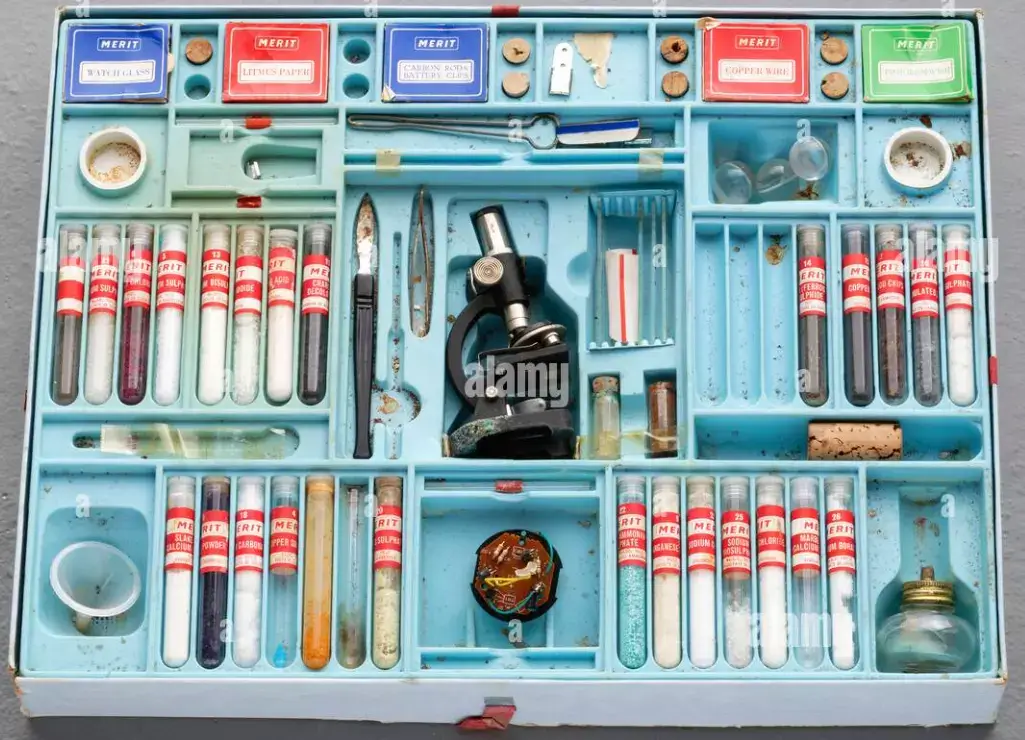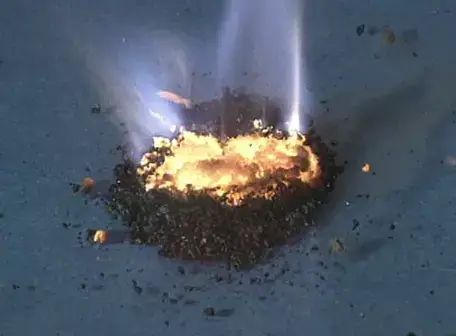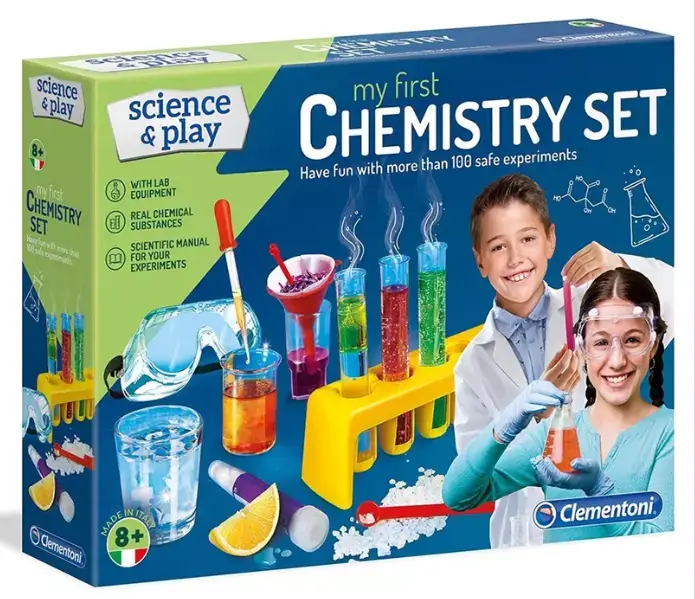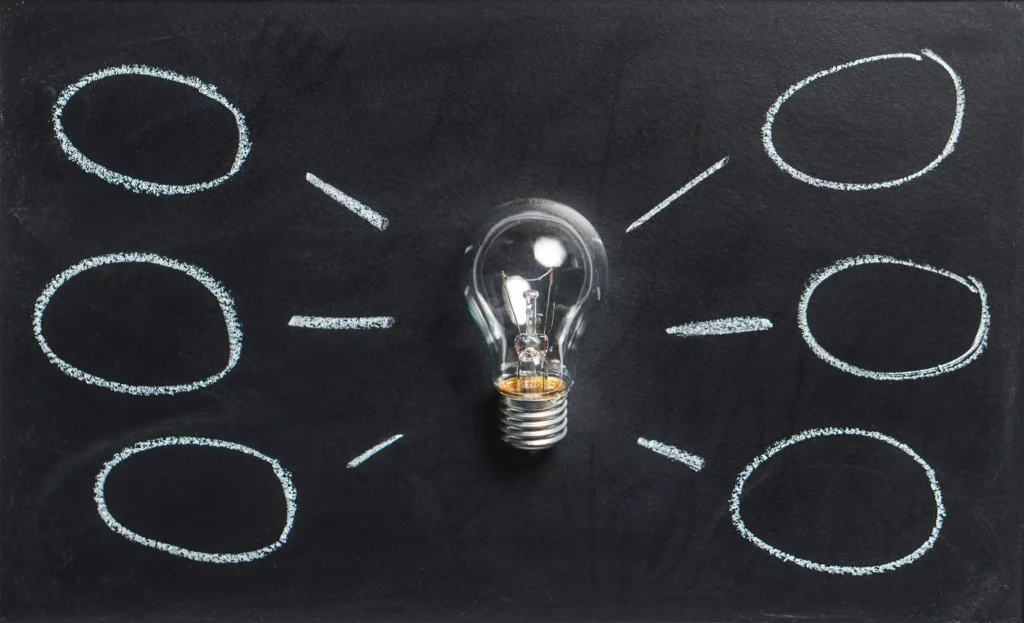
Introduction
Mention the words “chemistry set” to anyone who grew up in the 1950’s and 60’s, and watch their reaction. If they had an interest in science as a child, it is likely that their eyes could well glaze over as they fondly remember their first chemistry set and recount the experiments and fun they got up to.
In my own case, this interest was sparked as a 10 year old one Christmas day. I never looked back. By the time I was 14, I already knew that chemistry was for me. And when I finally took early retirement a few years ago, I was still working in the chemistry field in R&D for a major pharmaceutical company.
Chemistry Sets of Yesteryear
The chemistry set that triggered all this looked remarkably similar to the picture at the top of this post. I vaguely recall that it may have been a “Merit” set, and it did indeed have a small microscope among the test tubes. On the other hand, it could have been a Salter set from Thomas Salter Ltd., a Scottish toy and science kit manufacturer during this period. There were many such sets around at that time, all quite similar.
My own set came with proper glass test tubes, each filled with brightly coloured chemicals with exotic names, that I was trying to memorize. There was also a small burner with a wick that used methylated spirits, there were some scoops and spatulas, a small plastic scale for weighing out the various crystalline powders, some metal wire and even a funnel and round-bottomed flask. In other words, this was a true “old school” chemistry set, as opposed to what we see nowadays in our “health-and-safety-gone-mad” times
With frequent use and experimenting, the quantities of chemicals provided with the set began to run out. Now this was a critical moment. Interest could well have been lost at this stage and the set relegated to the cupboard, to be finally thrown out one day by my mother. But my interest did not wane. Quite the opposite… it grew. Moreover, I was fortunate to be a young teenager in the 1960’s when chemicals (both common and not so common) were readily available. Other extremely useful “school science” materials were to be found in local shops for any budding experimenter. So my own chemistry set grew both in size and sophistication.
As an example, I can still remember running up to the local chemist (pharmacy) shop in our village to get a medical prescription for my parents. But at the same time I would ask, very politely and somewhat sheepishly, if they had any of the three mineral acids: sulphuric, hydrochloric and nitric.
The lady in the shop would give me a knowing look. After her initial frown, she would go into a back room, dispense theses acids in small 50-100ml glass bottles, and return with the bottles, well stoppered with corks. Giving me a somewhat severe but an understanding look, we parted company with her final words… “just you be careful now”. For these samples were the concentrated forms of the acids, not those well diluted with water that you see on drug store and supermarket shelves today. Apparently, the pharmacist lady had been well informed previously by my mother that I was “keen on chemistry” and that I knew what I was doing.
Well… let’s hope I knew what I was doing!
Another excellent source of chemicals and equipment I discovered was a shop called Fitzpatricks. Located in our town centre, its main business was selling and repairing bicycles. But in one corner of the store there was a section devoted to science kits and similar toys, with an excellent range of chemistry sets. Not only that, this amazing shop also sold real laboratory glassware, a decent range of chemicals (hard to come by today) and other materials and equipment for the home scientist. A veritable schoolboy chemist’s heaven!
Fitzpatricks was located right next to The Empire, one of the two cinemas in our town. Once I had accumulated enough pocket money I would head down to the Empire for the Saturday Matinée. After the show, I would pop next door into Fitzpatricks to add to my growing chemistry collection.
Over the years this shop became my main source of supply. Glass retorts, Liebig condensers, beakers, conical and round-bottomed flasks, glass pipettes, Bunsen burners and tripods…they had absolutely everything!
The Zinc Sulphide Xperiment
Perhaps not quite as thrilling as the movie “The Quatermass Xperiment” (an excellent 1950’s SciFi romp that is still a good bit of fun and can be seen in full on YouTube), my own experiment was exciting in its own particular way!
I wanted to make zinc sulphide. The method was well described in the small instruction booklet that came with my chemistry set. You mix equal quantities of zinc dust and powdered sulphur (which the book referred to as “flowers” of sulphur, for some reason I didn’t comprehend at the time). Place the mixture on a metal tray, then start the reaction with a heated metal wire. Nothing could be simpler, right?
After all, the reaction is probably one of the simplest in chemistry:
Zn + S + heat → ZnS
Off I went to my parent’s kitchen, dismantled our gas cooker and connected my Bunsen burner with a thick rubber hose. The zinc and sulphur powders were carefully and assiduously mixed in a one to one ratio. Then the resulting dark grey mixture was placed in the steel tray in the shape of a miniature volcanic cone. With the Bunsen I heated up a length of thin iron wire until it glowed red and then plunged the wire into my volcano.
Nothing happened. Absolutely nothing! Back to heating the wire and try again. Still nothing. Not even a fizzle! After several more futile attempts I began to lose patience. Right, maybe it’s time for a more direct approach. Taking the Bunsen, I directed the flame onto the mixture….
There was this brief, bright flash and a Woosh!
Seconds later I stumbled out of the kitchen in a thick cloud of billowing white smoke, rubbing my eyes and coughing violently, much to the dismay of my parents in the next room.
They quickly determined that I wasn’t hurt nor had there been any permanent damage, neither to me nor the cooker! It goes without saying that my future chemistry exploits in the kitchen were most certainly terminated!. Any of my more exciting endeavours were from then on absolutely relegated to our backyard.
I did, nevertheless, take a look at the contents of the metal tray as I was cleaning up… there was nothing left. My efforts at synthesizing zinc sulphide had literally gone up in smoke!
Battle of Britain Re-enacted
For kids growing up in the 1960s, perhaps the most popular hobby was scale modelling with what we used to call plastic construction kits. Please remember… Nintendo, Sega, PlayStation and similar video games were more than a generation away in the future. (Building plastic kits, nevertheless, be it cars, planes, ships, sci-fi, whatever, still remains very popular today with a large following from modellers of all ages.)
The models I used to build, from about the age of 8 onwards, eventually became toys to play with, instead of just sitting on a shelf to gather dust. With playing, of course, many of the more fragile parts of the model broke off, became unglued, lost, and the poor model generally deteriorated. So what could be done with an old broken model with missing parts? Re-enact a battle of course!
Out came an old and broken model of a Heinkel He-111 WWII German bomber, and out came a small quantity of potassium permanganate and glycerine from my trusty chemistry set. Springle a few crystals permanganate in the aircraft cockpit, the engines and any other gap in the kit, then add a few drops of glycerine. Then wait…
After a few seconds the mixture spontaneously ignites with a purple flame!
This of course started to melt and burn the plastic of the model as I re-enacted the Battle of Britain (now outside in our backyard of course) with the Heinkel shot down in flames by a Spitfire fighter!
Here’s a typical image of the actual chemical reaction (minus the Heinkel)

The Chemistry Sets of Today
Today’s chemistry sets, in our health-and-safety-gone-mad world, can be a huge disappointment to a 10-year old as he or she opens the brand new shiny box and expectations for creating exciting bangs and sparks are suddenly extinguished. These sets bear little, if any, resemblance to the chemistry sets of yesteryear. The combination of the overriding spectre of health & safety, together with the manufacturers’ fear of litigation, have made modern chemistry sets incredibly bland and uninteresting presents for today’s blossoming young scientists.
There is very little, if anything, in the above images of the modern chemistry set that could cause real harm. Nevertheless, kids are exposed to physical dangers of various kinds every single day.
In my humble opinion, there is much to be said for letting them get their hands dirty. And learning to use a real chemistry set properly, with adequate supervision, would teach them how to handle risk appropriately, rather than completely avoiding it.





Whe l read this article l remembered my childhood stage before 53 years bedore when l was 10 years old. My story resembles the story of this artcle. U rembemered when my father brought me Thomas and Salter chemistry set 2 then Merit. I started doing chemistry experiments and fill the burner with alcohol. Later got chemistry set 7. I still keep them from 53 years ago and are in good state. I am a chemistry teacher.
Hi Khalil, I’m glad you enjoyed the post. It’s really amazing and wonderful that you still have these old sets! I wish I still had mine old chemistry sets. I’ve worked in chemistry R&D throughout my whole career and now that I am retired I am still having fun playing around with physics and chemistry experiments.
Steve
I am glad to hear this from you. What makes me surprised is that my story is similar to your one. Thomas and Salter, Merit, getting chemicals from the phermacy and stores when l was 11 years old. The chemistry sets are still with me. They are placed in my room and one day l will take photos of them and send them to you by email. They are treasure to me. I will retire from teaching after 2 years.
I had the same chemistry set as kid too. I loved the magnesium ribbon the best.
I was excited trying to get my son a chemistry set and like you felt utterly let down but whats in them.